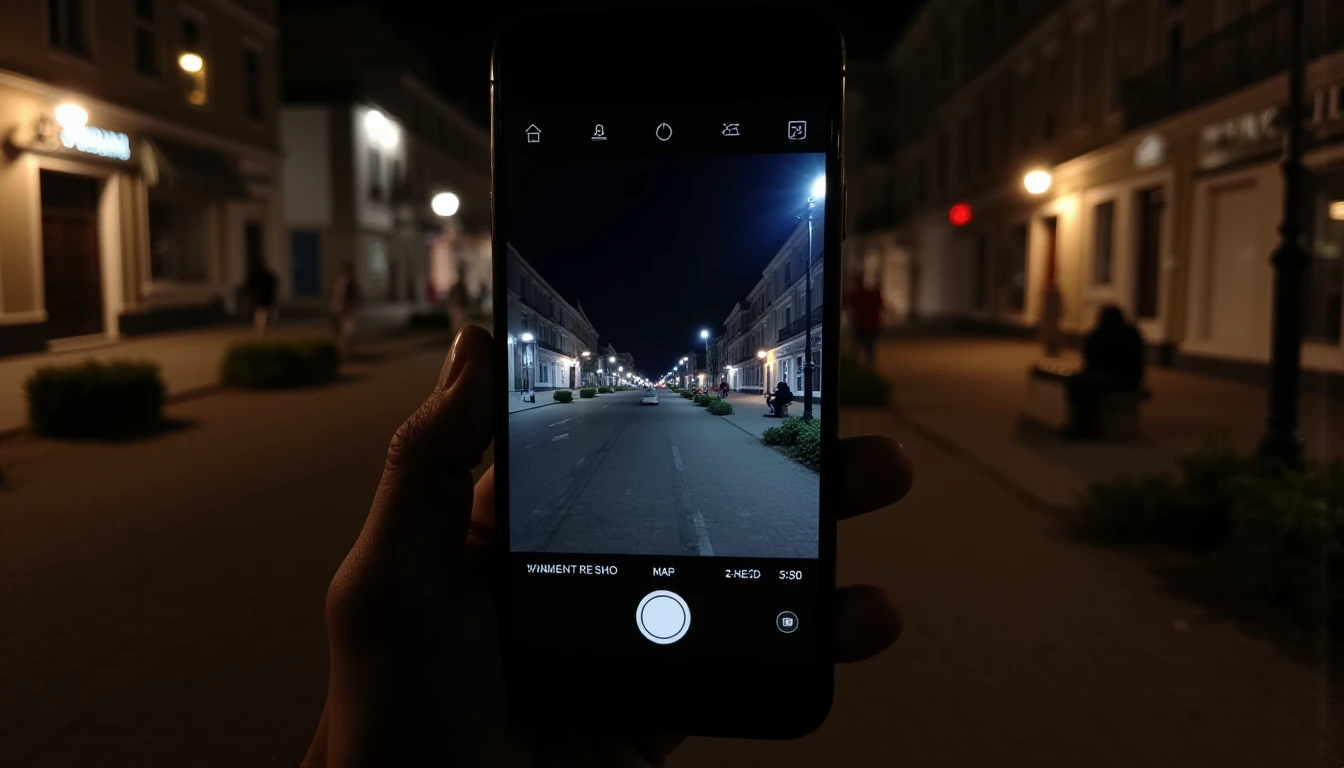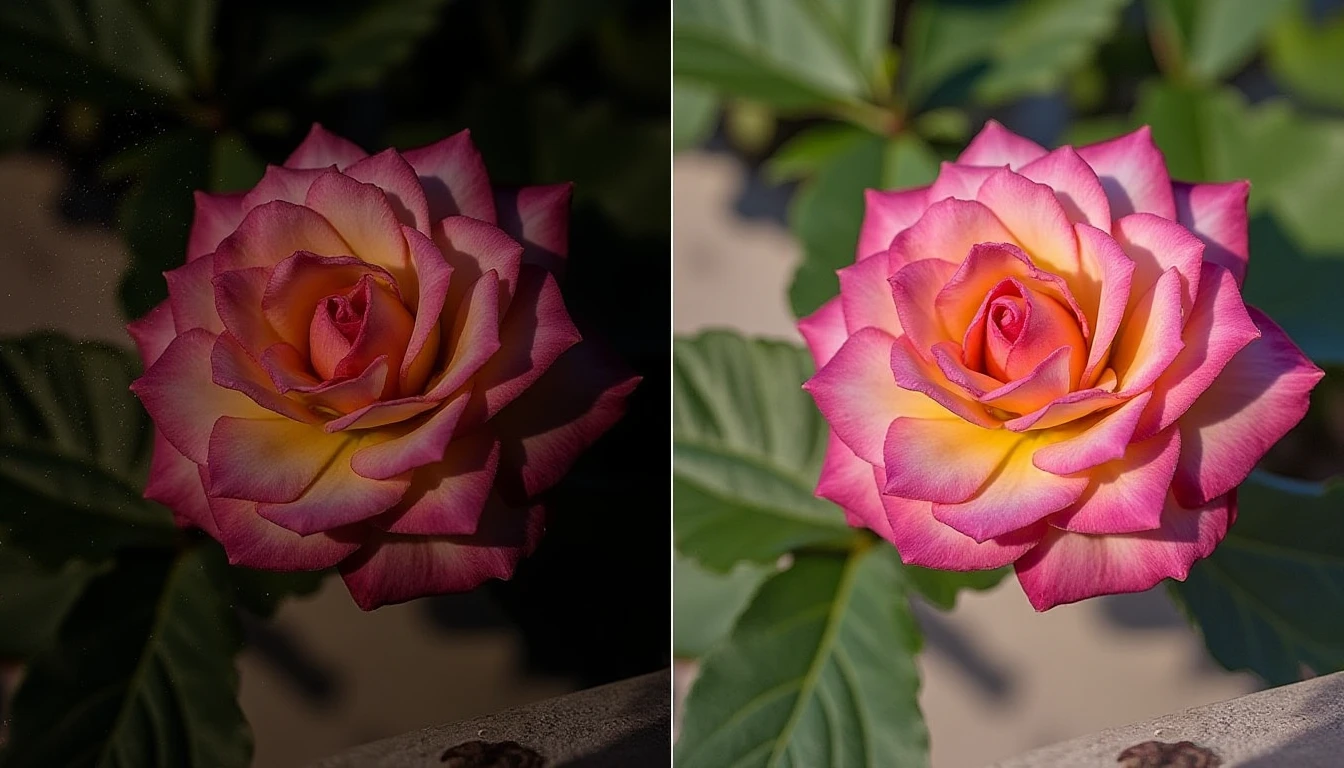Understanding Multi-Frame Image Fusion
Multi-frame image fusion is one of the most critical components behind modern smartphone cameras’ ability to excel in low-light photography. This technique involves capturing multiple images in rapid succession and then merging them into a single, high-quality photograph. The process begins with the camera’s sensor rapidly acquiring several frames, each exposed for different durations or under varying conditions. These frames are then aligned using advanced algorithms that ensure they fit together seamlessly without visible artifacts.
One of the key advantages of multi-frame image fusion is its ability to reduce noise while preserving detail. By capturing multiple frames, the algorithm can average out random variations in brightness and color across images, effectively filtering out noise. This process results in cleaner, more refined imagery even when shooting in dimly lit environments. Furthermore, multi-frame image fusion allows for better dynamic range by merging details captured under different exposure levels, ensuring that both dark shadows and bright highlights are retained with clarity.
Another aspect of multi-frame image fusion is its role in stabilizing images. In low-light scenarios, camera shake can be a significant issue due to the longer exposure times often required. By capturing multiple frames quickly, the algorithm can analyze the motion between frames and correct for any instability or jitter. This not only leads to sharper images but also allows photographers to capture high-quality shots without the need for external stabilization tools like tripods.

The Role of Computational Photography in Low-Light Capture
Computational photography leverages sophisticated algorithms to enhance traditional photographic processes, significantly improving low-light image quality on smartphones. At its core, computational photography involves processing raw sensor data beyond what is possible with standard camera hardware alone. This approach allows for advanced features like depth sensing, bokeh effects, and noise reduction, all of which contribute to better low-light performance.
One notable technique used in computational photography for low-light scenarios is tone mapping. Tone mapping algorithms adjust the exposure levels across different parts of an image to create a balanced appearance without losing important details. This process ensures that areas with both high and low light are rendered correctly, resulting in images that appear natural even under challenging lighting conditions. Additionally, computational photography can employ scene analysis to detect specific objects or elements within the frame, optimizing exposure settings dynamically for each region of the image.
Another critical aspect is the use of advanced noise reduction techniques. Traditional cameras often struggle with noise in low-light situations because long exposures can introduce more random variations in pixel values. Computational photography addresses this issue by applying complex filtering algorithms that selectively reduce noise without compromising texture or fine details. These filters work by analyzing patterns within multiple frames and intelligently removing unwanted artifacts while preserving the natural look of textures such as skin, fabrics, or foliage.

Enhancing Image Quality with High Dynamic Range (HDR)
High Dynamic Range (HDR) is another powerful tool utilized in smartphone cameras to improve image quality in low-light conditions. HDR technology captures multiple frames at different exposure levels and then combines them into a single image that retains details across the entire range of luminance, from deep shadows to bright highlights.
The first step in achieving high-quality HDR images involves capturing three or more exposures of the same scene. Each exposure is taken with varying shutter speeds, ISO settings, or aperture values to cover a broad spectrum of light levels. This approach ensures that both dark and bright areas are adequately represented within the final image. Once these frames are captured, sophisticated algorithms merge them into one cohesive picture.
One of the significant benefits of HDR in low-light photography is its ability to preserve details in shadowed regions without blowing out highlights. By combining exposures with different brightness levels, HDR can effectively balance the light across various parts of the scene. This results in images that look more natural and vibrant compared to those captured using standard exposure settings. Additionally, HDR processing algorithms often include advanced noise reduction techniques tailored specifically for low-light conditions, further enhancing image clarity.
Another advantage of HDR is its capability to enhance color accuracy and saturation. In low-light environments, colors can appear washed out or less vivid due to the camera’s attempt to compensate for insufficient light. HDR algorithms adjust colors based on the combined information from multiple frames, ensuring that each pixel reflects true-to-life hues while maintaining proper contrast.
Leveraging Deep Learning for Noise Reduction
Deep learning techniques have revolutionized noise reduction in smartphone cameras by enabling more accurate and efficient processing of raw sensor data. These methods involve training neural networks to recognize patterns associated with noise and apply corrective measures accordingly, resulting in cleaner images even under challenging lighting conditions.
One of the primary ways deep learning improves noise reduction is through its ability to analyze large datasets containing various types of image artifacts. By feeding these examples into a neural network, researchers can train models that automatically identify subtle signs of noise across different frequencies and intensities. Once trained, these networks can be integrated directly into smartphone cameras as part of their real-time processing pipeline.
Another benefit of deep learning in this context is its adaptability to changing conditions. Unlike traditional algorithms designed with fixed parameters, neural networks can dynamically adjust their behavior based on the current environment. For example, if a scene contains both high-contrast elements and fine textures, the network can apply more aggressive noise reduction techniques where necessary while preserving important details elsewhere.
Lastly, deep learning models excel at handling complex scenarios involving multiple sources of interference such as thermal noise, sensor defects, or even reflections from nearby objects. By continuously refining their understanding through exposure to diverse training data sets, these algorithms become increasingly adept at distinguishing between genuine image content and unwanted distortions, ensuring that every captured frame remains clear and well-defined.

Exploring Artificial Intelligence in Real-Time Image Enhancement
Artificial intelligence (AI) plays a pivotal role in real-time image enhancement for smartphones by enabling instantaneous adjustments to various parameters including focus, exposure, color balance, and more. These intelligent systems can analyze each frame as it is captured and make optimized decisions on-the-fly without requiring user intervention.
One of the key applications of AI in this domain is its ability to predict optimal settings based on contextual information about the scene being photographed. For instance, if a camera detects that a subject is moving rapidly within an image, it can automatically adjust shutter speed and aperture values to ensure sharpness and clarity even during high-speed motion sequences. Similarly, when faced with complex lighting situations like backlit scenes or harsh shadows, AI algorithms can dynamically balance exposure levels to produce well-exposed images that accurately represent the intended composition.
Moreover, AI-driven systems are capable of performing advanced edge detection and segmentation tasks which allow for precise control over specific areas within an image. This capability enables features such as selective focus adjustments where only certain regions remain in focus while others become slightly blurred, creating a natural depth-of-field effect known as bokeh. Such techniques not only enhance aesthetic appeal but also provide photographers with greater creative freedom without needing post-processing tools.
Finally, real-time AI enhancements extend beyond mere visual improvements to include practical functionalities like automatic object recognition and labeling. By integrating machine learning models capable of identifying common objects within frames, smartphones can offer features such as dynamic composition guidance or even augmented reality overlays that enrich user experiences by providing additional context or interaction options directly through the lens.













